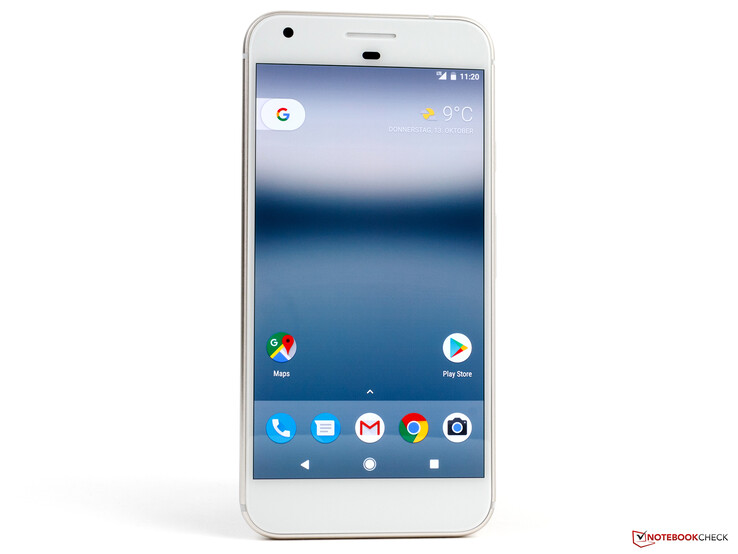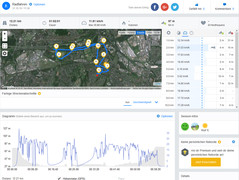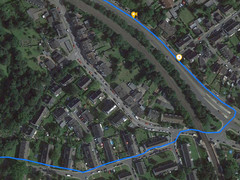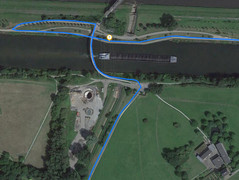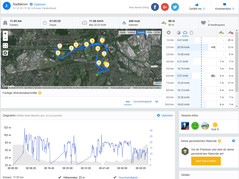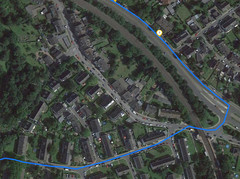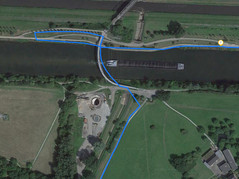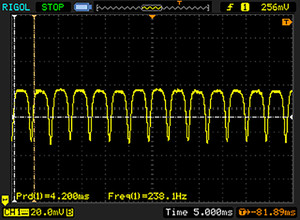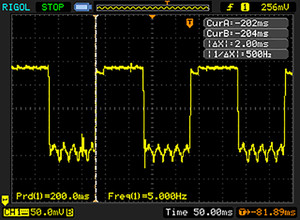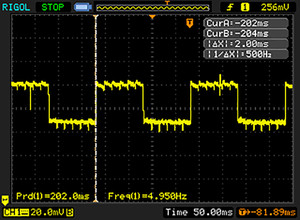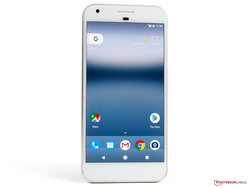谷歌 Pixel XL 智能手机简短评测
» Notebookcheck多媒体笔记本电脑Top 10排名
» Notebookcheck游戏笔记本电脑Top 10排名
» Notebookcheck低价办公/商务笔记本电脑Top 10排名
» Notebookcheck高端办公/商务笔记本电脑Top 10排名
» Notebookcheck工作站笔记本电脑Top 10排名
» Notebookcheck亚笔记本电脑Top 10排名
» Notebookcheck超级本产品Top 10排名
» Notebookcheck变形本产品Top 10排名
» Notebookcheck平板电脑Top 10排名
» Notebookcheck智能手机Top 10排名
» Notebookcheck评测过最出色的笔记本电脑屏幕
» Notebookcheck售价500欧元以下笔记本电脑Top 10排名
» Notebookcheck售价300欧元以下笔记本电脑Top 10排名
Size Comparison
| Networking | |
| iperf3 transmit AX12 | |
| Apple iPhone 7 (Klaus I211) | |
| Google Pixel XL 2016 | |
| Samsung Galaxy S7 Edge | |
| LG G5 | |
| iperf3 receive AX12 | |
| Apple iPhone 7 (Klaus I211) | |
| Google Pixel XL 2016 | |
| Samsung Galaxy S7 Edge | |
| LG G5 | |
| |||||||||||||||||||||||||
Brightness Distribution: 85 %
Center on Battery: 402 cd/m²
Contrast: ∞:1 (Black: 0 cd/m²)
ΔE ColorChecker Calman: 4 | ∀{0.5-29.43 Ø4.78}
ΔE Greyscale Calman: 3.2 | ∀{0.09-98 Ø5}
Gamma: 2.19
CCT: 7037 K
| Google Pixel XL 2016 AMOLED, 2560x1440, 5.5" | Google Nexus 6P AMOLED, 2560x1440, 5.7" | Apple iPhone 7 Plus IPS, 1920x1080, 5.5" | Samsung Galaxy S7 Edge Super AMOLED, 2560x1440, 5.5" | Huawei P9 Plus AMOLED, 1920x1080, 5.5" | Microsoft Lumia 950 XL AMOLED, 2560x1440, 5.7" | HTC 10 Super LCD 5, 2560x1440, 5.2" | |
|---|---|---|---|---|---|---|---|
| Screen | 19% | 47% | 43% | -20% | 10% | 14% | |
| Brightness middle (cd/m²) | 402 | 363 -10% | 557 39% | 554 38% | 361 -10% | 297 -26% | 445 11% |
| Brightness (cd/m²) | 408 | 365 -11% | 553 36% | 552 35% | 366 -10% | 297 -27% | 434 6% |
| Brightness Distribution (%) | 85 | 90 6% | 97 14% | 96 13% | 87 2% | 93 9% | 93 9% |
| Black Level * (cd/m²) | 0.35 | 0.36 | |||||
| Colorchecker dE 2000 * | 4 | 2.34 41% | 1.4 65% | 1.59 60% | 5.1 -28% | 2.67 33% | 2.8 30% |
| Colorchecker dE 2000 max. * | 10.1 | 3.1 69% | 2.56 75% | 10 1% | 3.98 61% | 5.8 43% | |
| Greyscale dE 2000 * | 3.2 | 1.03 68% | 1.3 59% | 2.01 37% | 5.5 -72% | 2.81 12% | 3.7 -16% |
| Gamma | 2.19 100% | 2.23 99% | 2.21 100% | 2.01 109% | 2.24 98% | 2.08 106% | 2.31 95% |
| CCT | 7037 92% | 6429 101% | 6667 97% | 6321 103% | 7388 88% | 6379 102% | 7164 91% |
| Contrast (:1) | 1591 | 1236 | |||||
| Color Space (Percent of AdobeRGB 1998) (%) | 63.1 | 82.12 | 66.31 | ||||
| Color Space (Percent of sRGB) (%) | 99.83 | 99.98 | 99.79 |
* ... smaller is better
Screen Flickering / PWM (Pulse-Width Modulation)
| Screen flickering / PWM detected | 238.1 Hz | ||
The display backlight flickers at 238.1 Hz (worst case, e.g., utilizing PWM) . The frequency of 238.1 Hz is relatively low, so sensitive users will likely notice flickering and experience eyestrain at the stated brightness setting and below. In comparison: 53 % of all tested devices do not use PWM to dim the display. If PWM was detected, an average of 8111 (minimum: 5 - maximum: 343500) Hz was measured. | |||
Display Response Times
| ↔ Response Time Black to White | ||
|---|---|---|
| 4 ms ... rise ↗ and fall ↘ combined | ↗ 2 ms rise | |
| ↘ 2 ms fall | ||
| The screen shows very fast response rates in our tests and should be very well suited for fast-paced gaming. In comparison, all tested devices range from 0.1 (minimum) to 240 (maximum) ms. » 15 % of all devices are better. This means that the measured response time is better than the average of all tested devices (20.2 ms). | ||
| ↔ Response Time 50% Grey to 80% Grey | ||
| 4 ms ... rise ↗ and fall ↘ combined | ↗ 2 ms rise | |
| ↘ 2 ms fall | ||
| The screen shows very fast response rates in our tests and should be very well suited for fast-paced gaming. In comparison, all tested devices range from 0.165 (minimum) to 636 (maximum) ms. » 14 % of all devices are better. This means that the measured response time is better than the average of all tested devices (31.6 ms). | ||
| AnTuTu v6 - Total Score (sort by value) | |
| Google Pixel XL 2016 | |
| HTC 10 | |
| OnePlus 3 | |
| Apple iPhone 7 Plus | |
| Samsung Galaxy S7 Edge | |
| Lenovo Moto Z | |
| Microsoft Lumia 950 XL | |
| Huawei P9 | |
| Lenovo ZUK Z2 | |
| LG G5 | |
| Geekbench 4.0 | |
| 64 Bit Single-Core Score (sort by value) | |
| Google Pixel XL 2016 | |
| OnePlus 3 | |
| Apple iPhone 7 Plus | |
| Samsung Galaxy S7 Edge | |
| Lenovo Moto Z | |
| Huawei P9 | |
| LG G5 | |
| 64 Bit Multi-Core Score (sort by value) | |
| Google Pixel XL 2016 | |
| OnePlus 3 | |
| Apple iPhone 7 Plus | |
| Samsung Galaxy S7 Edge | |
| Lenovo Moto Z | |
| Huawei P9 | |
| LG G5 | |
| 3DMark | |
| 2560x1440 Sling Shot OpenGL ES 3.0 Unlimited (sort by value) | |
| Google Pixel XL 2016 | |
| OnePlus 3 | |
| Apple iPhone 7 Plus | |
| Samsung Galaxy S7 Edge | |
| Lenovo Moto Z | |
| Lenovo ZUK Z2 | |
| LG G5 | |
| 2560x1440 Sling Shot OpenGL ES 3.0 Unlimited Graphics (sort by value) | |
| Google Pixel XL 2016 | |
| OnePlus 3 | |
| Apple iPhone 7 Plus | |
| Samsung Galaxy S7 Edge | |
| Lenovo Moto Z | |
| Lenovo ZUK Z2 | |
| LG G5 | |
| 2560x1440 Sling Shot OpenGL ES 3.0 Unlimited Physics (sort by value) | |
| Google Pixel XL 2016 | |
| OnePlus 3 | |
| Apple iPhone 7 Plus | |
| Samsung Galaxy S7 Edge | |
| Lenovo Moto Z | |
| Lenovo ZUK Z2 | |
| LG G5 | |
| 2560x1440 Sling Shot Extreme (ES 3.1) Unlimited (sort by value) | |
| Google Pixel XL 2016 | |
| OnePlus 3 | |
| Samsung Galaxy S7 Edge | |
| Lenovo Moto Z | |
| Lenovo ZUK Z2 | |
| LG G5 | |
| 2560x1440 Sling Shot Extreme (ES 3.1) Unlimited Graphics (sort by value) | |
| Google Pixel XL 2016 | |
| OnePlus 3 | |
| Samsung Galaxy S7 Edge | |
| Lenovo Moto Z | |
| Lenovo ZUK Z2 | |
| LG G5 | |
| 2560x1440 Sling Shot Extreme (ES 3.1) Unlimited Physics (sort by value) | |
| Google Pixel XL 2016 | |
| OnePlus 3 | |
| Samsung Galaxy S7 Edge | |
| Lenovo Moto Z | |
| Lenovo ZUK Z2 | |
| LG G5 | |
| GFXBench 3.0 | |
| on screen Manhattan Onscreen OGL (sort by value) | |
| Google Pixel XL 2016 | |
| HTC 10 | |
| OnePlus 3 | |
| Apple iPhone 7 Plus | |
| Samsung Galaxy S7 Edge | |
| Lenovo Moto Z | |
| Microsoft Lumia 950 XL | |
| Huawei P9 | |
| Lenovo ZUK Z2 | |
| LG G5 | |
| 1920x1080 1080p Manhattan Offscreen (sort by value) | |
| Google Pixel XL 2016 | |
| HTC 10 | |
| OnePlus 3 | |
| Apple iPhone 7 Plus | |
| Samsung Galaxy S7 Edge | |
| Lenovo Moto Z | |
| Microsoft Lumia 950 XL | |
| Huawei P9 | |
| Lenovo ZUK Z2 | |
| LG G5 | |
| GFXBench 3.1 | |
| on screen Manhattan ES 3.1 Onscreen (sort by value) | |
| Google Pixel XL 2016 | |
| HTC 10 | |
| OnePlus 3 | |
| Apple iPhone 7 Plus | |
| Samsung Galaxy S7 Edge | |
| Lenovo Moto Z | |
| Huawei P9 | |
| Lenovo ZUK Z2 | |
| LG G5 | |
| 1920x1080 Manhattan ES 3.1 Offscreen (sort by value) | |
| Google Pixel XL 2016 | |
| HTC 10 | |
| OnePlus 3 | |
| Apple iPhone 7 Plus | |
| Samsung Galaxy S7 Edge | |
| Lenovo Moto Z | |
| Huawei P9 | |
| Lenovo ZUK Z2 | |
| LG G5 | |
| PCMark for Android - Work performance score (sort by value) | |
| Google Pixel XL 2016 | |
| HTC 10 | |
| OnePlus 3 | |
| Samsung Galaxy S7 Edge | |
| Lenovo Moto Z | |
| Huawei P9 | |
| Lenovo ZUK Z2 | |
| LG G5 | |
| Basemark ES 3.1 / Metal - offscreen Overall Score (sort by value) | |
| Google Pixel XL 2016 | |
| HTC 10 | |
| OnePlus 3 | |
| Apple iPhone 7 Plus | |
| Samsung Galaxy S7 Edge | |
| Lenovo Moto Z | |
| Huawei P9 | |
| LG G5 | |
| Lightmark - 1920x1080 1080p (sort by value) | |
| OnePlus 3 | |
| Samsung Galaxy S7 Edge | |
| Lenovo Moto Z | |
| Huawei P9 | |
| LG G5 | |
| Epic Citadel - Ultra High Quality (sort by value) | |
| Google Pixel XL 2016 | |
| OnePlus 3 | |
| Samsung Galaxy S7 Edge | |
| Lenovo Moto Z | |
| Huawei P9 | |
| LG G5 | |
| Octane V2 - Total Score (sort by value) | |
| Google Pixel XL 2016 | |
| HTC 10 | |
| OnePlus 3 | |
| Apple iPhone 7 Plus | |
| Samsung Galaxy S7 Edge | |
| Lenovo Moto Z | |
| Microsoft Lumia 950 XL | |
| Huawei P9 | |
| Lenovo ZUK Z2 | |
| LG G5 | |
| Mozilla Kraken 1.1 - Total (sort by value) | |
| Google Pixel XL 2016 | |
| HTC 10 | |
| OnePlus 3 | |
| Apple iPhone 7 Plus | |
| Samsung Galaxy S7 Edge | |
| Lenovo Moto Z | |
| Microsoft Lumia 950 XL | |
| Huawei P9 | |
| Lenovo ZUK Z2 | |
| LG G5 | |
| WebXPRT 2015 - Overall (sort by value) | |
| Google Pixel XL 2016 | |
| HTC 10 | |
| OnePlus 3 | |
| Apple iPhone 7 Plus | |
| Samsung Galaxy S7 Edge | |
| Lenovo Moto Z | |
| Microsoft Lumia 950 XL | |
| Huawei P9 | |
| LG G5 | |
| JetStream 1.1 - Total Score (sort by value) | |
| Google Pixel XL 2016 | |
| HTC 10 | |
| OnePlus 3 | |
| Apple iPhone 7 Plus | |
| Samsung Galaxy S7 Edge | |
| Lenovo Moto Z | |
| Microsoft Lumia 950 XL | |
| Huawei P9 | |
| Lenovo ZUK Z2 | |
| LG G5 | |
* ... smaller is better
| Google Pixel XL 2016 Adreno 530, SD 821, 32 GB eMMC Flash | HTC 10 Adreno 530, 820 MSM8996, 32 GB eMMC Flash | OnePlus 3 Adreno 530, 820 MSM8996, 64 GB UFS 2.0 Flash | Samsung Galaxy S7 Edge Mali-T880 MP12, Exynos 8890, 32 GB UFS 2.0 Flash | Lenovo Moto Z Adreno 530, 820 MSM8996, 32 GB eMMC Flash | Huawei P9 Mali-T880 MP4, Kirin 955, 32 GB eMMC Flash | Lenovo ZUK Z2 Adreno 530, 820 MSM8996, 64 GB eMMC Flash | LG G5 Adreno 530, 820 MSM8996, 32 GB eMMC Flash | |
|---|---|---|---|---|---|---|---|---|
| AndroBench 3-5 | -3% | 56% | 43% | 155% | 42% | -47% | 37% | |
| Sequential Read 256KB (MB/s) | 258.2 | 275.1 7% | 408.7 58% | 487.3 89% | 439.7 70% | 281.3 9% | 239.4 -7% | 427.6 66% |
| Sequential Write 256KB (MB/s) | 83.4 | 115.6 39% | 153.3 84% | 145.1 74% | 168.3 102% | 72.2 -13% | 46.52 -44% | 141.3 69% |
| Random Read 4KB (MB/s) | 87.7 | 29.92 -66% | 137.6 57% | 86.7 -1% | 117.2 34% | 39 -56% | 21.27 -76% | 89.3 2% |
| Random Write 4KB (MB/s) | 14.56 | 15.89 9% | 18.23 25% | 15.79 8% | 74.9 414% | 47.45 226% | 5.64 -61% | 16.22 11% |
| Asphalt 8: Airborne | |||
| Settings | Value | ||
| high | 30 fps | ||
| very low | 30 fps | ||
| Dead Trigger 2 | |||
| Settings | Value | ||
| high | 58 fps | ||
(±) The maximum temperature on the upper side is 42.3 °C / 108 F, compared to the average of 35.2 °C / 95 F, ranging from 21.9 to 247 °C for the class Smartphone.
(+) The bottom heats up to a maximum of 38.5 °C / 101 F, compared to the average of 34 °C / 93 F
(+) In idle usage, the average temperature for the upper side is 29.5 °C / 85 F, compared to the device average of 32.9 °C / 91 F.
Google Pixel XL 2016 audio analysis
(+) | speakers can play relatively loud (88.5 dB)
Bass 100 - 315 Hz
(-) | nearly no bass - on average 21.8% lower than median
(±) | linearity of bass is average (11.2% delta to prev. frequency)
Mids 400 - 2000 Hz
(+) | balanced mids - only 3.5% away from median
(+) | mids are linear (4.3% delta to prev. frequency)
Highs 2 - 16 kHz
(±) | higher highs - on average 8.1% higher than median
(+) | highs are linear (4.2% delta to prev. frequency)
Overall 100 - 16.000 Hz
(±) | linearity of overall sound is average (20.4% difference to median)
Compared to same class
» 34% of all tested devices in this class were better, 9% similar, 57% worse
» The best had a delta of 11%, average was 35%, worst was 134%
Compared to all devices tested
» 53% of all tested devices were better, 8% similar, 39% worse
» The best had a delta of 4%, average was 24%, worst was 134%
Apple iPhone 7 Plus audio analysis
(±) | speaker loudness is average but good (81.4 dB)
Bass 100 - 315 Hz
(-) | nearly no bass - on average 24.1% lower than median
(±) | linearity of bass is average (7.4% delta to prev. frequency)
Mids 400 - 2000 Hz
(+) | balanced mids - only 4.7% away from median
(±) | linearity of mids is average (7.6% delta to prev. frequency)
Highs 2 - 16 kHz
(+) | balanced highs - only 4.3% away from median
(+) | highs are linear (6.9% delta to prev. frequency)
Overall 100 - 16.000 Hz
(±) | linearity of overall sound is average (22% difference to median)
Compared to same class
» 45% of all tested devices in this class were better, 7% similar, 48% worse
» The best had a delta of 11%, average was 35%, worst was 134%
Compared to all devices tested
» 63% of all tested devices were better, 7% similar, 31% worse
» The best had a delta of 4%, average was 24%, worst was 134%
Lenovo Moto Z audio analysis
(+) | speakers can play relatively loud (83.9 dB)
Bass 100 - 315 Hz
(-) | nearly no bass - on average 34.4% lower than median
(±) | linearity of bass is average (8.2% delta to prev. frequency)
Mids 400 - 2000 Hz
(±) | reduced mids - on average 5.4% lower than median
(+) | mids are linear (6% delta to prev. frequency)
Highs 2 - 16 kHz
(+) | balanced highs - only 2.3% away from median
(+) | highs are linear (1.8% delta to prev. frequency)
Overall 100 - 16.000 Hz
(±) | linearity of overall sound is average (23.5% difference to median)
Compared to same class
» 53% of all tested devices in this class were better, 8% similar, 39% worse
» The best had a delta of 11%, average was 35%, worst was 134%
Compared to all devices tested
» 69% of all tested devices were better, 6% similar, 24% worse
» The best had a delta of 4%, average was 24%, worst was 134%
| Off / Standby | |
| Idle | |
| Load |
|
Key:
min: | |
| Google Pixel XL 2016 3450 mAh | Google Nexus 6P 3450 mAh | HTC 10 3000 mAh | Apple iPhone 7 Plus 2915 mAh | Samsung Galaxy S7 Edge 3600 mAh | Huawei P9 Plus 3400 mAh | OnePlus 3 3000 mAh | |
|---|---|---|---|---|---|---|---|
| Power Consumption | -30% | -45% | -52% | -15% | -13% | -24% | |
| Idle Minimum * (Watt) | 0.53 | 0.83 -57% | 0.68 -28% | 0.77 -45% | 0.63 -19% | 0.87 -64% | 0.57 -8% |
| Idle Average * (Watt) | 1.07 | 1.09 -2% | 1.49 -39% | 2.04 -91% | 1.1 -3% | 1.2 -12% | 1.24 -16% |
| Idle Maximum * (Watt) | 1.12 | 1.17 -4% | 1.91 -71% | 2.24 -100% | 1.56 -39% | 1.27 -13% | 1.36 -21% |
| Load Average * (Watt) | 5.53 | 7.49 -35% | 7.4 -34% | 4.69 15% | 5.95 -8% | 4.69 15% | 5.92 -7% |
| Load Maximum * (Watt) | 6.26 | 9.51 -52% | 9.71 -55% | 8.66 -38% | 6.7 -7% | 5.63 10% | 10.53 -68% |
* ... smaller is better
| Google Pixel XL 2016 3450 mAh | Google Nexus 6P 3450 mAh | HTC 10 3000 mAh | Apple iPhone 7 Plus 2915 mAh | Samsung Galaxy S7 Edge 3600 mAh | Huawei P9 Plus 3400 mAh | OnePlus 3 3000 mAh | |
|---|---|---|---|---|---|---|---|
| Battery runtime | 4% | -1% | 29% | 56% | 21% | 38% | |
| Reader / Idle (h) | 22.2 | 24.1 9% | 21.2 -5% | 30.6 38% | 27.7 25% | 24.1 9% | 22.3 0% |
| H.264 (h) | 8.4 | 8.9 6% | 10.8 29% | 13.6 62% | 15.2 81% | 12.9 54% | 14.1 68% |
| WiFi v1.3 (h) | 8.4 | 6.3 -25% | 6.9 -18% | 9.8 17% | 12.2 45% | 8.8 5% | 14 67% |
| Load (h) | 3.8 | 4.7 24% | 3.4 -11% | 3.8 0% | 6.5 71% | 4.4 16% | 4.5 18% |
Pros
Cons
谷歌Pixel XL是一款非常优秀的智能手机。不过它的核心功能谷歌助手,并不是它值得推荐的原因。特别是这项功能很难帮助生产商说服用户接受它较高的售价。
不过,Pixel XL搭配了最新科技,强劲的处理器,大容量内存,出色的相机,高速无线网络和LTE Cat.11,以及出色的通话音质。
在设计上的感受可能因人而异。不过,让人感到遗憾的是它的存储空间无法通过microSD卡扩展,因为它的大容量版本价位高出了不少。而无限的图片云储存空间只能解决一部分的问题。另外,它的电池续航时间也需要进一步改进,这可能会通过软件更新逐渐改善,因为它所搭配的硬件理论上可以提供更好的表现。
谷歌Pixel XL支持很多先进功能。可惜它的价位也创造了新高。
谷歌Pixel XL是适合骨灰级用户的一台智能手机。它能否成功还要看广大用户的反应如何了。
注:本文是基于完整评测的缩减版本,阅读完整的英文评测,请点击这里。
Google Pixel XL 2016
- 11/02/2016 v5.1 (old)
Daniel Schmidt




